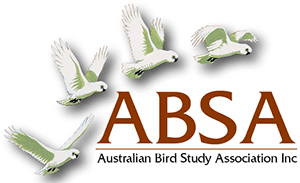THE NESTING BIOLOGY OF THE BROWN HONEVEATER Lichmera indistincta IN THE DARWIN REGION OF NORTHERN AUSTRALIA, WITH NOTES ON TIDAL FLOODING OF NESTS
| Posted: |
22/07/2021 |
| Author(s): |
Donald C. Franklin, Richard A. Noske |
In the Darwin region of northern Australia, the Brown Honeyeater nests in mangals (mangrove communities),
woodlands and urban areas. Based on observations of 75 nests whose laying date could be estimated, the
breeding season extends from April to September, a pattern that is consistent across years and habitats. Nests
are usually built in shrubs and low twiggy growth of small trees, with a median nest height of 1.1 metre above
the ground. The modal clutch size was 2, with a mean of 1.84, a small clutch size for such a small species
(10 g), even by Australian standards. Both the incubation and nestling periods were approximately 13 to
13.5 days, slightly shorter than the 14 days previously reported. Females alone build, incubate and brood, but
both sexes feed the young. Nest success was estimated to be 42 per cent, with most egg or nestling failures
being the result of predation of the entire nest contents, or of flooding. Ten mangal nests were flooded by sea
water during spring high tides. The period between full lunar cycle spring tide sequences (29-30 days) is slightly
less than the time it takes a Brown Honeyeater to build a nest, lay and incubate the eggs and fledge the
young. As a consequence, all nests built in mangals below about 7.4 metres Chart Datum would have been
flooded. In mangals, Brown Honeyeaters may therefore only nest successfully in landward zones that are on
higher ground and are thus subject to less deep inundation. At least three mangrove-endemic bird species are
also obligate shrub-nesters, so preservation of landward mangrove zones may be critical for the conservation of
mangrove bird communities.
>> Download Abstract |
File Size: 158KB
>> Download Complete PDF | File Size: 1MB
